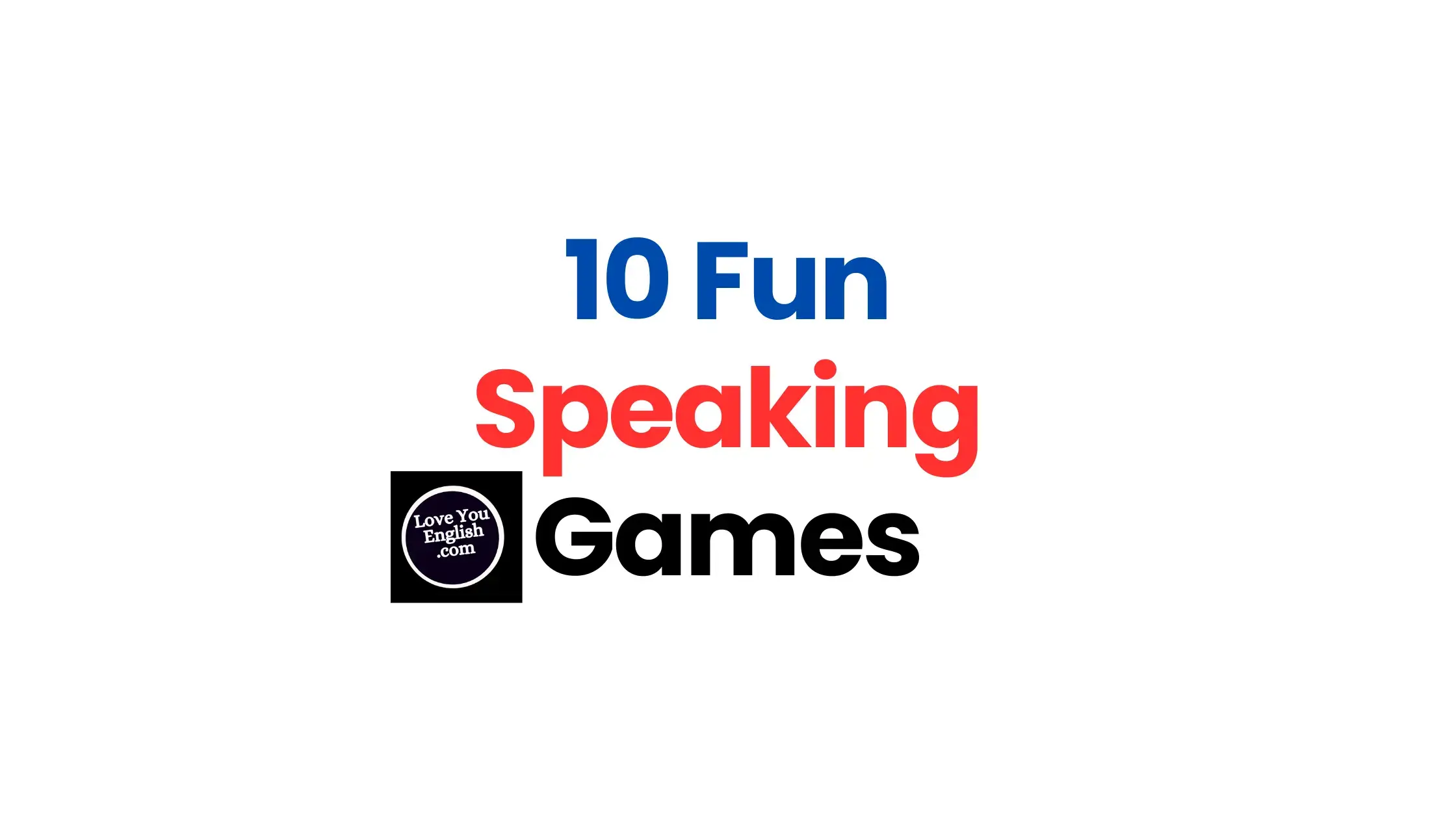10 Fun Speaking Games for Language Learners
Speaking games are an excellent way to improve language skills while having fun.
They can help learners build confidence, expand their vocabulary, and practice pronunciation.
Whether you’re an English teacher, a parent, or a learner looking for new ways to practice, these games are simple, effective, and enjoyable.
Here are 10 fun speaking games you can try today!
1. 20 Questions
How to Play:
- One person thinks of an object, place, or person.
- The other players can ask up to 20 yes-or-no questions to guess what it is.
For example:
Player: “Is it a living thing?”
Responder: “Yes.”
Player: “Is it an animal?”
Responder: “Yes.”
Why It’s Fun:
This game improves question formation and critical thinking. Learners also get a chance to practice answering questions clearly.
2. Describe and Draw
How to Play:
- One player describes a picture or object without showing it.
- The other players must draw what they hear based on the description.
For example:
Describer: “There is a big round sun in the top left corner. Below it, there is a house with a triangular roof.”
Why It’s Fun:
This game helps learners practice giving detailed descriptions and improves listening skills.
3. Role Play Scenarios
How to Play:
- Create a real-life situation (e.g., ordering food, buying tickets, visiting a doctor).
- Players take turns acting out the roles.
For example:
Role A: “Hello, I’d like to order a pizza, please.”
Role B: “Sure! What toppings would you like?”
Why It’s Fun:
Role play makes learning practical and prepares learners for real-life conversations.
4. Tongue Twisters Challenge
How to Play:
- Choose a tongue twister and ask players to say it as quickly and clearly as possible.
For example: - “She sells seashells by the seashore.”
- “Peter Piper picked a peck of pickled peppers.”
Why It’s Fun:
Tongue twisters are great for improving pronunciation and speed. They often lead to laughter when people make mistakes!
5. Story Chain
How to Play:
- One player starts a story with one sentence.
- Each player adds one sentence to continue the story.
For example:
Player 1: “Once upon a time, there was a brave knight.”
Player 2: “He decided to rescue a princess trapped in a tower.”
Why It’s Fun:
This game builds creativity and fluency as learners think quickly to continue the story.
6. Guess Who
How to Play:
- One player thinks of a famous person, character, or someone in the room.
- The other players ask yes-or-no questions to guess who it is.
For example:
Player: “Is this person alive?”
Responder: “Yes.”
Player: “Are they a singer?”
Responder: “No.”
Why It’s Fun:
This game sharpens questioning skills and introduces learners to new vocabulary related to professions, hobbies, and descriptions.
7. Spot the Difference (Speaking Version)
How to Play:
- Players look at two similar pictures with slight differences.
- One player describes their picture while the other identifies the differences.
For example:
Describer: “In my picture, the boy is wearing a red shirt.”
Listener: “In my picture, the boy is wearing a blue shirt.”
Why It’s Fun:
Learners practice describing and comparing things, improving their attention to detail.
8. Word Association
How to Play:
- One player says a word, and the next player quickly says a related word.
For example:
Player 1: “Apple.”
Player 2: “Fruit.”
Player 3: “Banana.”
Why It’s Fun:
This fast-paced game builds vocabulary and quick thinking. It’s simple but very engaging.
9. Would You Rather?
How to Play:
- Players take turns asking “Would you rather” questions.
For example:
Player: “Would you rather live on the moon or under the sea?”
Responder: “I’d rather live under the sea because I love fish.”
Why It’s Fun:
This game encourages learners to explain their choices, improving their ability to express opinions.
10. Two Truths and a Lie
How to Play:
- Each player says three statements about themselves: two are true, and one is a lie.
- The other players guess which statement is the lie.
For example:
Player: “I’ve been to Paris. I love pizza. I’m afraid of heights.”
Guesser: “The lie is you’re afraid of heights!”
Why It’s Fun:
This game is excellent for practicing speaking and listening. It’s also a great way to learn fun facts about others.
Tips for Playing Speaking Games
- Create a Friendly Environment:
Encourage everyone to participate without fear of making mistakes. Mistakes are part of learning! - Adapt to the Group’s Level:
Choose games that match the language level of the learners. Adjust the rules if necessary to make them easier or harder. - Use Visuals and Props:
Pictures, flashcards, and everyday objects can make the games more engaging and easier to understand. - Encourage Creativity:
Allow learners to use their imagination. The goal is to speak and enjoy the process. - Set Time Limits:
For games like Word Association or 20 Questions, use a timer to keep the game moving quickly.
Why Speaking Games Work
- Boost Confidence:
Speaking in a relaxed, game-like setting helps learners feel more comfortable using the language. - Enhance Fluency:
Regular practice through games helps learners think and speak faster over time. - Make Learning Fun:
Games transform learning into an enjoyable activity, keeping learners motivated. - Improve Listening and Speaking Skills:
Many games require active listening and speaking, which are crucial for communication.
Final thoughts
Speaking games are not just for classrooms—they can also be played at home, during breaks, or with friends.
Whether you’re teaching or learning, these 10 games will make language practice enjoyable and effective.
So, gather your group, pick a game, and start speaking!
Read more:
- English Conversations About Motorcycles
- English Conversations About Entertainment
- English Dialogues About Blue Whales







